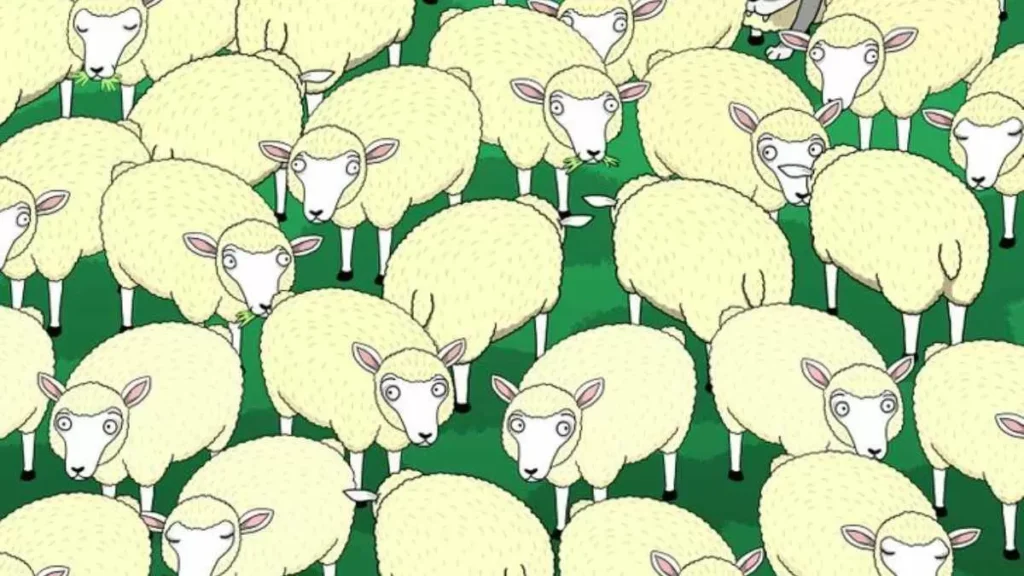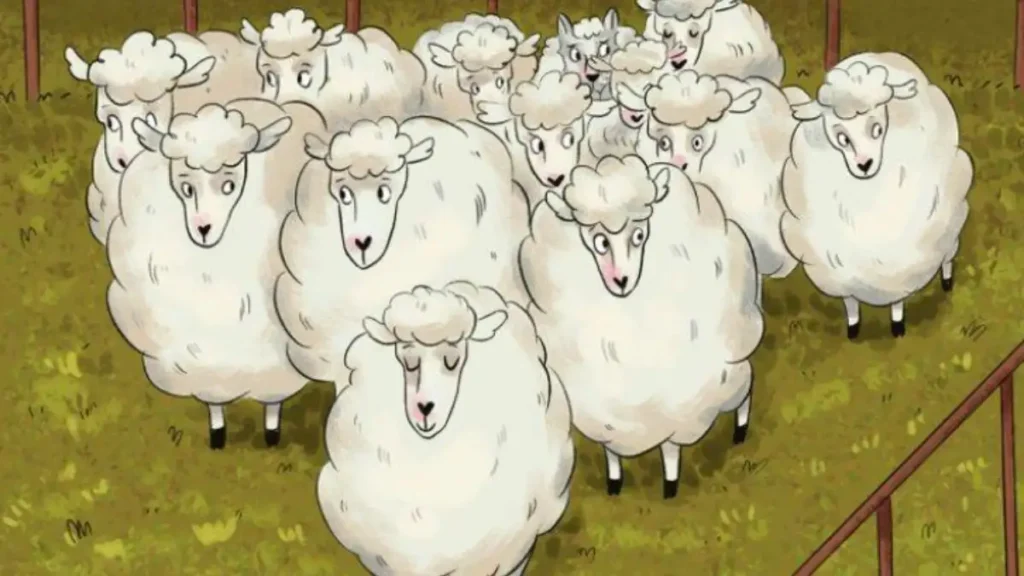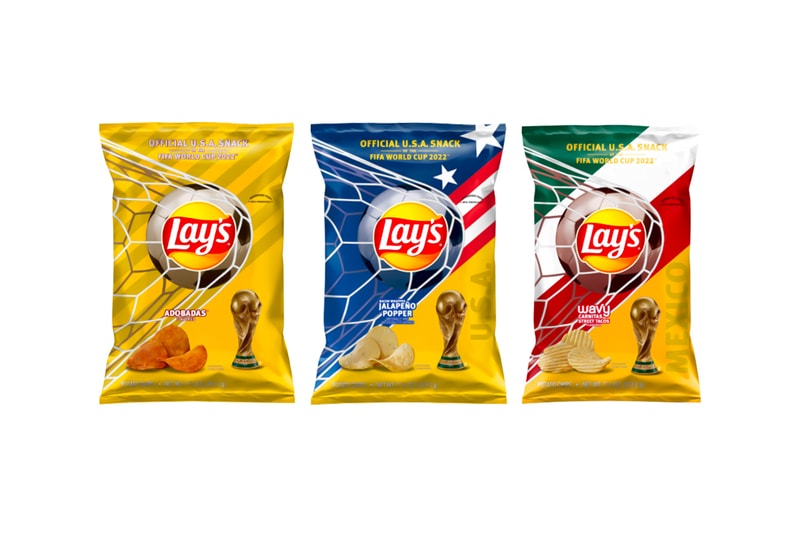Optical illusions have fascinated humans for centuries, captivating our minds with their ability to trick our vision and perception.
These intriguing phenomena occur when our brains interpret visual information in a way that differs from reality.
One such illusion, often shared as a visual test, challenges viewers to identify hidden elements within an image quickly.
Among these, the “Hidden Wolf” illusion stands out, where only those with keen supervision can spot the concealed wolf in just ten seconds.
This article delves into the world of optical illusions, explores the science behind them, and provides a detailed breakdown of how to master the art of spotting hidden objects in images.
1. Understanding Optical Illusions
Optical illusions occur when there is a discrepancy between what our eyes see and what our brain perceives.
These illusions exploit the brain’s shortcuts in processing visual information, leading to misinterpretations.
They can be categorized into several types, including literal illusions, physiological illusions, and cognitive illusions.
Literal illusions create images that are different from the objects that make them, physiological illusions are caused by excessive stimulation of the eyes and brain, and cognitive illusions involve higher-level cognitive processes.
2. The Hidden Wolf Illusion
The Hidden Wolf illusion is a classic example of a cognitive illusion.
It challenges viewers to find a wolf hidden within a complex image within a limited time frame, typically ten seconds.
This illusion tests not only one’s visual acuity but also the brain’s ability to process and identify patterns quickly.
The challenge lies in the wolf being camouflaged within the image, blending seamlessly with the background or other elements, making it difficult to spot at first glance.
3. The Importance of Supervision in Identifying the Wolf
Supervision, in the context of optical illusions, refers to the ability to meticulously scan and analyze an image.
This skill is crucial in identifying hidden elements like the wolf in the Hidden Wolf illusion.
Supervision involves focusing on minute details, recognizing patterns, and distinguishing subtle differences in shapes and colors.
Developing this skill enhances one’s ability to solve visual puzzles and can be applied in various real-life scenarios, such as surveillance, forensic analysis, and quality control in manufacturing.
4. Techniques to Improve Visual Perception

Enhancing visual perception requires practice and the application of specific techniques.
Here are a few methods to improve your ability to identify hidden objects in optical illusions:
A. Practice with Different Illusions
Regularly engaging with various types of optical illusions can train your brain to recognize patterns and discrepancies more efficiently.
This practice can enhance your overall visual acuity and speed in spotting hidden elements.
B. Focus on the Entire Image
Instead of fixating on one part of the image, try to scan the entire picture methodically.
This approach increases the chances of catching subtle details that might be missed with a narrow focus.
C. Take Breaks and Refresh Your Eyes
Staring at an image for too long can cause visual fatigue, making it harder to spot hidden elements.
Taking short breaks and looking away from the screen or image can refresh your eyes and improve your perception.
5. The Role of Context in Perception
Context plays a significant role in how we perceive optical illusions.
Our brains use contextual information to fill in gaps and make sense of what we see.
In the Hidden Wolf illusion, the wolf’s camouflage is often designed to blend with the surrounding elements, making it essential to consider the entire context of the image.
Understanding how context influences perception can aid in developing strategies to identify hidden objects more effectively.
6. The Psychological Impact of Optical Illusions
Optical illusions not only intrigue us but also provide insights into the workings of the human brain.
They highlight the brain’s capacity for pattern recognition, depth perception, and color differentiation.
Studying illusions can help researchers understand visual processing disorders and develop tools to assist individuals with such conditions.
Additionally, illusions can be used therapeutically to improve cognitive functions and visual skills.
7. Real-Life Applications of Visual Perception Skills
The ability to identify hidden objects and details has practical applications beyond optical illusions.
Professions such as radiologists, detectives, and pilots rely on keen visual perception skills to perform their duties effectively.
Training in visual perception can enhance job performance, reduce errors, and increase safety in these fields.
The Hidden Wolf illusion, while seemingly a simple puzzle, serves as a valuable exercise in honing these critical skills.
8. The Science Behind Camouflage
Camouflage is a natural phenomenon that animals use to blend into their surroundings and avoid predators.
The principles of camouflage are often applied in optical illusions like the Hidden Wolf.
Understanding how camouflage works can provide insights into how to spot hidden elements in illusions.
Animals use patterns, colors, and textures to match their environment, and similar techniques are employed in creating optical illusions to deceive the human eye.
9. Case Studies of Successful Identification

Examining case studies where individuals successfully identified hidden elements in illusions can provide valuable insights and strategies.
These case studies highlight the importance of experience, attention to detail, and the application of specific techniques in solving visual puzzles.
Analyzing these success stories can help others improve their own supervision skills and approach to optical illusions.
10. Conclusion
Optical illusions continue to captivate and challenge us, revealing the complexities of human perception.
The Hidden Wolf illusion, with its blend of visual trickery and cognitive challenge, exemplifies the fascinating interplay between sight and interpretation.
By understanding the science behind illusions, practicing visual perception techniques, and considering the role of context, individuals can enhance their ability to identify hidden elements within images.
Whether for professional applications or personal enjoyment, mastering the art of optical illusions enriches our appreciation of the intricacies of the human mind.
Additional Tips for Identifying the Hidden Wolf
A. Use Peripheral Vision
Sometimes, focusing directly on an area can cause you to miss hidden details. Try using your peripheral vision to catch movement or irregularities in the pattern.
B. Adjust Lighting and Contrast
Changing the lighting conditions or adjusting the contrast of the image can make hidden elements more visible.
Experimenting with these settings can provide a fresh perspective and reveal details that were previously obscured.
C. Collaborate with Others
Two sets of eyes are often better than one. Collaborating with someone else to analyze the image can increase the chances of spotting the hidden wolf.
Different perspectives and approaches can lead to a quicker identification.
D. Take a Step Back
Viewing the image from a distance can sometimes make hidden elements more apparent.
Stepping back allows you to see the overall pattern and can reveal inconsistencies that are not visible up close.
Other Stories You May Like
Conclusion Revisited
The Hidden Wolf illusion is more than just a visual puzzle; it is a testament to the marvels of human perception and the brain’s ability to interpret complex visual information.
By embracing the challenge, practicing supervision, and applying the techniques discussed, anyone can enhance their visual acuity and appreciation for optical illusions.
Whether you are a professional seeking to sharpen your skills or a curious individual fascinated by visual phenomena, the journey through the world of optical illusions promises to be both enlightening and enjoyable.
4o





















